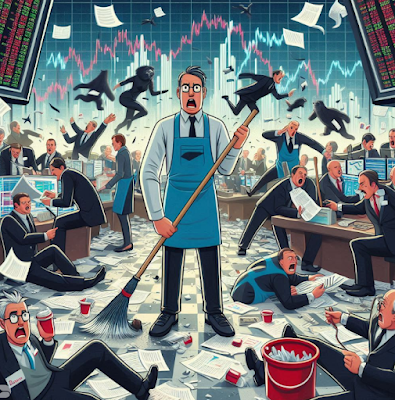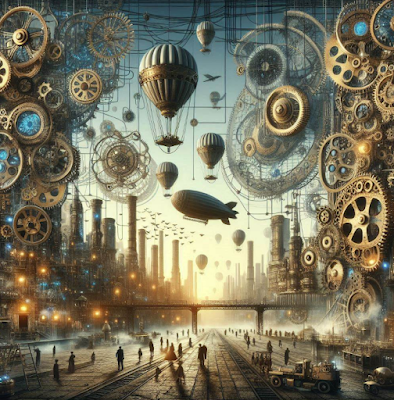Home › 6a) Gold & Monetary Metals › 6a.) GoldCore › The ‘Fed Put’ – Gone Until There’s Blood in the Streets
Permanent link to this article: https://snbchf.com/2022/01/flood-the-fed-gone-blood-streets/
Donate to SNBCHF.com
Donate to SNBCHF.com Via Paypal or Bitcoin To Help Keep the Site Running
Please consider making a small donation to Snbchf.com. Thanks
Bitcoin wallet: bc1qa2h6hgd0xkuh7xh02jm5x25k6x8g7548ffaj3j
Receive a Daily Mail from this Blog
Live Currency Cross Rates
 On Swiss National Bank
On Swiss National Bank
-
USD/CHF gains ground near 0.8850, potential upside seems limited
9 days ago -
USD/CHF holds below 0.8950 amid Middle East geopolitical risks
2024-06-25 -
SNB Sight Deposits: increased by 2.4 billion francs compared to the previous week
5 days ago -
SNB Surprises the Market (Again)
2024-06-20 -
USD/CHF appreciates to near 0.8950 due to hawkish Fed, SNB Financial Stability Report eyed
2024-06-13
 Main SNB Background Info
Main SNB Background Info
-
SNB Sight Deposits: increased by 2.4 billion francs compared to the previous week
5 days ago -
The Secret History Of The Banking Crisis
2017-08-14 -
SNB Balance Sheet Now Over 100 percent GDP
2016-08-29 -
The relationship between CHF and gold
2016-07-23 -
CHF Price Movements: Correlations between CHF and the German Economy
2016-07-22
Featured and recent
-
 Canada’s “Worst Decline in 40 Years”
Canada’s “Worst Decline in 40 Years” -
No exceptions, please!
-
 #517 Wie viel ist dein Immobilienfonds noch wert? #fonds
#517 Wie viel ist dein Immobilienfonds noch wert? #fonds -
 Roboter – KI und Verdrängung des Menschen
Roboter – KI und Verdrängung des Menschen -
 El Legado de Biden es PEOR de lo que Parece…
El Legado de Biden es PEOR de lo que Parece… -
Kamala’s Palace Coup
-
 How to Invest in High Safety Corporate Bonds
How to Invest in High Safety Corporate Bonds -
 7-26-24 Should You Tap Your Home Equity for Retirement Income?
7-26-24 Should You Tap Your Home Equity for Retirement Income? -
 UBS questioned by US Senator over $350 million tax evasion case
UBS questioned by US Senator over $350 million tax evasion case -
 Lanz: Das Allein “beseitigt” keine AfD Wähler!
Lanz: Das Allein “beseitigt” keine AfD Wähler!
More from this category
 Canada’s “Worst Decline in 40 Years”
Canada’s “Worst Decline in 40 Years”26 Jul 2024
- No exceptions, please!
26 Jul 2024
- Kamala’s Palace Coup
26 Jul 2024
- What Project 2025 says about the Fed
26 Jul 2024
- Student loans are the ‘fudge factor’ that allows institutional profiteering
26 Jul 2024
- Socialism, Israeli-style
26 Jul 2024
 Is the Dramatic Yen Short Squeeze Over?
Is the Dramatic Yen Short Squeeze Over?26 Jul 2024
- Time to reject ‘social justice’ and replace it with real justice
25 Jul 2024
- Wall Street’s latest poison: Leveraged EFTs
25 Jul 2024
- A ‘smart city’ is a city plagued by high taxes and central planning
25 Jul 2024
 Reich vs Reality: Free Markets Work Best
Reich vs Reality: Free Markets Work Best25 Jul 2024
 Yen’s Surge Continues, while PBOC Surprises with Another Rate Cut, and US 2-30 Year Yield Curve Ends Inversion
Yen’s Surge Continues, while PBOC Surprises with Another Rate Cut, and US 2-30 Year Yield Curve Ends Inversion25 Jul 2024
 UBS questioned by US Senator over $350 million tax evasion case
UBS questioned by US Senator over $350 million tax evasion case25 Jul 2024
- Biden’s parting deluge of deceit deserves damning
25 Jul 2024
 How westward expansion sowed the seeds of the Civil War
How westward expansion sowed the seeds of the Civil War25 Jul 2024
 Have we been living in an MMT world since 2008?
Have we been living in an MMT world since 2008?25 Jul 2024
- United in economic stagnation and false fears
24 Jul 2024
- Kamala Harris is awful
24 Jul 2024
 Greenback and Yen Extend Gains
Greenback and Yen Extend Gains24 Jul 2024
- Anarchy in the UK
24 Jul 2024











The ‘Fed Put’ – Gone Until There’s Blood in the Streets
Published on January 30, 2022
Stephen Flood
My articles My videosMy books
Follow on:
The ‘Fed put’ – gone until there’s blood in the streets
Well, it’s happening. Bitcoin (and other cryptocurrencies are sharply down, along with equity markets in many advanced economies.
And the Federal Reserve (the U.S. Central Bank) statement and press conference on Wednesday didn’t indicate any backing down from raising interest rates, maybe as soon as the March meeting.
The Fed’s stance pivot from ‘the economy needs additional stimulus’ to ‘it is time to start tightening policy’ came at the end of 2021 when Fed officials changed their view that 40-year high readings on consumer price inflation was due to transitory factors and will subside on its own.
Their new stance that high inflation is permanent and is what ensures tighter policy. The Fed has already started reducing how much it is adding to its balance sheet each month with another reduction at Wednesday’s meeting to purchasing a total of US$30 billion in assets in February 2022, from a high of US $120 billion in assets being added to its balance sheet each month.
The Fed will likely end these purchases altogether at its next meeting, scheduled for March 15-16.
And is indicating that it will raise interest rates at that meeting too.
The market implied probability currently has a 100% likelihood of a March interest rate hike.
The Federal Reserve is also discussing the possibility of starting to reduce its bloated US$9 trillion balance sheet soon after.
Two points we want to address below – the Fed ‘put’ and the decline in bitcoin.
What is a Fed ‘Put’?
The term was first used in the 1980s when Alan Greenspan was Fed Chair. Investopedia (with our bolding added) defines it as:
Greenspan put was the moniker given to the policies implemented by Alan Greenspan during his tenure as Federal Reserve (Fed) Chair.
The Greenspan-led Fed was extremely proactive in halting excessive stock market declines, acting as a form of insurance against losses, similar to a regular put option
… A historical review of the price action after each instance of the Greenspan put lends credence to the market belief that the Fed would continue to back-stop the stock markets in the future.
Since Greenspan, every Fed Chair has exercised their own version of what has now been coined the ‘Fed put’.
This ‘put’ jargon means the Fed has backed off from tightening policy when equity markets decline significantly.
The Fed (and other central banks) care about equity markets because they are a leading indicator of economic activity. Recessions and recessions lead to layoffs and slack in labour markets associate with sharp declines.
And remember the Fed has a dual mandate of ‘price stability and maximum sustainable employment’.
January 2022’s big change is that the Fed put has been cancelled because central banks think stopping inflation matters more than keeping stock markets near all time highs.
The message that the Fed’s focus is on bringing down the high inflation numbers came through this week’s meeting statement. Also, equity markets continued to decline as did bitcoin.
We are still skeptical that the ‘Fed pivot’ to tighter policy faster is a one-way pivot and that the Fed will not back-track.
The Fed gets scarred if stocks fall another 10%, if so it will not tighten policy as quickly as the markets currently expect.
Remember all that government debt still exists; that the interest payment must be paid on that debt, and higher interest rates mean higher payments.
There is also the housing market to consider, yes it might be bloated but a housing crash is not something the US administration would be pleased about heading into mid-term elections.
So, in our view, the ‘Fed put’ is not over forever because we expect central banks will flinch!
The Bitcoin Collapse
Now let’s talk about the decline in Bitcoin.
Yes, equity markets are down, with the S&P 500 close to 10% of its highs, and the NASDAQ down 15%. However, Bitcoin is down almost 50% off its highs as of the time of writing.
The significance of this is that this is the sixth time since the end of 2017 that Bitcoin has declined more than 40%.
Yes, that’s right, six times in just over four years. And remember a 50% decline takes a 100% gain to put it back at the same place it started.
Over this same period, the largest decline in the S&P 500 was 34% at the start of the Covid crisis. The second largest decline was 20% at the end of 2018.
And gold’s largest decline over this time period was 19% after reaching its all-time high in August 2020.
Bitcoin has been touted as a gold alternative in a portfolio.
However, two reasons this does not hold are that Bitcoin does not act as a portfolio diversifier the same way that gold does.
Meaning that Bitcoin and equity markets have both moved significantly down. Also, Bitcoin has magnified the decline of the equity markets.
Gold on the other hand has had a small increase since the beginning of the year.
The second issue is the sheer volatility of Bitcoin. Six declines of more than 40% in four years is quite a speculation!
Yes, the gold price has had the peak to trough declines over bear cycle periods. However, over 40% declines have occurred four times in the last 50 years. This is quite the difference in frequency to be sure!
Full story here Are you the author?Follow on:
No related photos.
Tags: Alan Greenspan,Bitcoin,Commentary,crypto,cryptocurrency,Featured,Gold,gold price,gold price analysis,gold price forecast,gold price news,gold price prediction,gold price today,inflation,Investing,Monetary Policy,News,newsletter,Precious Metals,silver,stock market,stocks,the fed